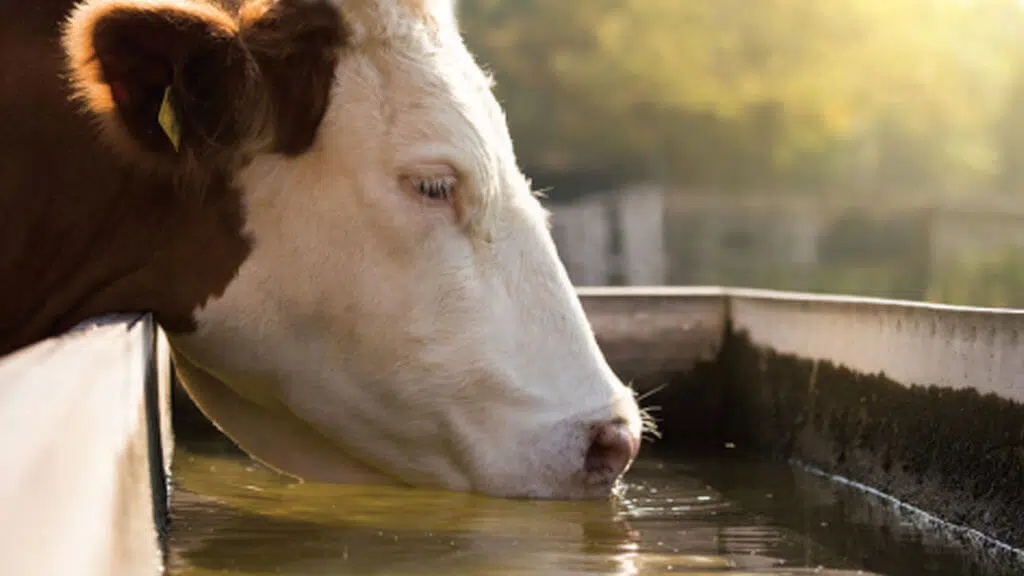Did you know that the water on your farm can help you make critical decisions about your herd’s mineral nutrition? Many people see water as something that they are constantly being told how to manage: “provide enough water”, “make sure it is clean and cool”, “clean your drinking troughs regularly”. Very few people recognise the fact that the mineral content of water can have huge implications on the mineral nutrition of their animals.
STEP 1
Having water properly analysed by an accredited laboratory is an essential starting point. These results can tell you a lot about the state of affairs on your farm. Taking a water sample is simple; but, as always, the reliability of the analysis is determined by the quality of the sample.
INTERPRETING THE RESULTS
Results mean nothing unless you understand them. For example, you cannot simply deduct the mineral levels in your water from those in your feed in order to ‘balance and cheapen’ the ration. Mineral forms and bio-availabilities of minerals in water are all different to those in feed and must be considered seperately. Once you receive the report, have it interpreted so that you can understand the data. Now you can start making decisions! If the levels of microbials (bacteria and fungi) in the water are too high, you may need to have the water treated or filtered.
Five top tips for taking a top-quality water sample
Take the sample from the running water entering the trough.
Take samples in a sterile bottle. If you are stuck without a bottle, buy a big bottle of water (still water, not the sparkling kind) from a garage and empty it out just before you take the sample, being careful not to touch the mouth of the bottle.
Wrap samples in foil to protect them from light.
Do not freeze water samples. Keep them in the fridge or cooler box.
Microbial analysis takes time because samples need to be cultured. If you want microbial analysis done, take water samples on a Monday or Tuesday and get them to the lab within 24 hours.
IRON ANTAGONISM
Another important decision you can make based on the results of this analysis involves looking at the amount of iron in the water, as this is the primary source of mineral antagonisms in farm animals. Why is iron antagonistic? Fortunately, there is a short and simple answer. Iron, manganese, copper, and zinc all use the same doorway out of the gut and into the animal; the so-called ZIP metal transporter. If there is an overload of any one of these minerals in the gut, the doorway gets clogged and nothing else can get through. This is an important reason why we might see clinical deficiencies in the animal even though levels in the feed are adequate. To make matters worse, the body responds to the overload by stopping the production of more ZIP doorways, which decreases the bio-availability of all of these minerals, irrespective of whether they are supplied correctly in the diet. If the ZIP transport doorway is clogged up, we need to use a different doorway, and this is where organic minerals find their place in the ration. Minerals bound to single amino acids are able to enter the body through an amino acid doorway, irrespective of the level of mineral antagonisms in the diet.
UNDERSTANDING WHY
The decision to include organic minerals in a ration should only be taken once you understand why you are choosing this option. Including organic minerals in a ration simply as a “nice-to-have” addition implies that they will be the first thing you drop when times get tough – exactly when they are needed most! Do your homework and call in the experts to perform a farm evaluation in order to develop a clear understanding of the issue you want to fix. Remember, the most expensive addition to your ration is the one that does not work.
Read full articleAlex Jenkins is a technical specialist in the ruminant team at Chemuniqué and holds a master's degree in animal science from the University of KwaZulu-Natal.










